Dating U.S. Navy Rating Badges

|

|
Dating U.S. Navy rating badges to period can be a challenge. The design and manufacture style did slowly evolve since their original creation in 1841. Those predating World War Two are fairly uncommon. Each of the various specialty devices appearing on the rating badge were used for defined periods and their appearance on a badge is an aid to dating. For example, the specialty of Guided Missileman was established in 1955 and the appearance of this device on a rating badge alone is enough to say it is not a World War Two badge. Dating bullion rating badges is very difficult and I should mention that in 1942 the manufacture of silver and gold bullion embroidered rating badges was suspended for the duration of the Second World War. John A. Stacey's book U.S. Navy Rating Badges, Specialty Marks, Distinguishing Marks is a useful guide to the various marks and contains a detailed discussion of the history of rating badges and techniques of dating them.
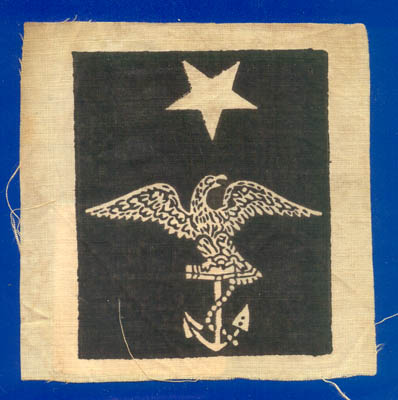
|
| c1866 Rating Pattern Piece |
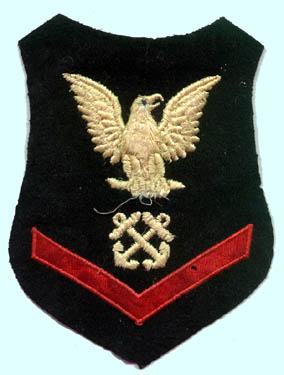 Coxswain 3rd Class Shield Shaped | 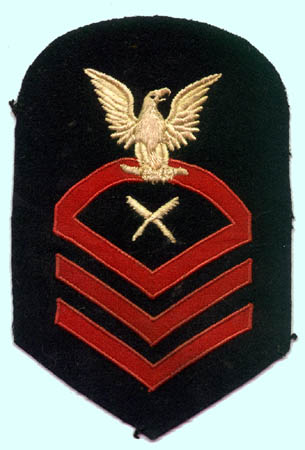 Yeoman Chief Petty Officer |
Pre-1941 rating badges are often cut into shield or other odd shapes. The eagle leans to the side.
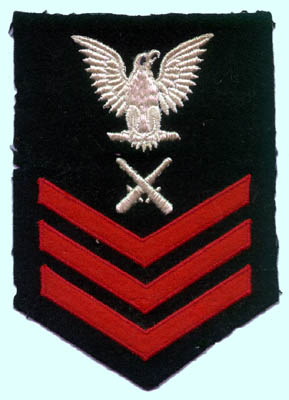
| 
|
| Petty Officer First Class Gunner's Mate front | back showing 1942 date |
World War Two period rating badges have an upright eagle. The outside cut of the rating is of a uniform shape. Many of them bear a date of manufacture. These dates disappear in the late 1940s. The grade stripes are separate pieces of cloth sewn on the badge. During the war smaller rating badges were approved for female personnel.
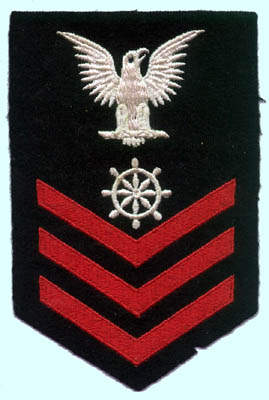
| 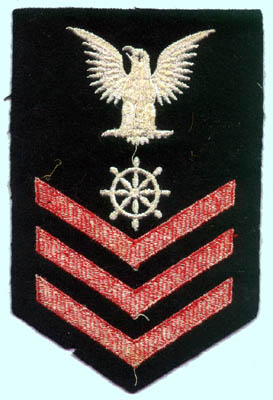
|
| Quartermaster Petty Officer First Class (Front) | Directly Machine Embroidred Stripe (Back) |
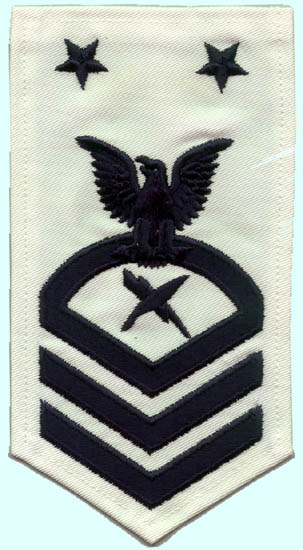
|
| Cryptologic Technician Master Chief Petty Officer |
After the Second World the manufacture slowly changed. Badges with grade stripes were embroidered directly on the badges rather than being a separate piece of cloth sewn on became the norm. There were some of this type manufactured as early as the Second World War, but they are uncommon. The cloth used was sometimes synthetic material. During the late 1940s two piece badges were used with the upper part being the eagle and specialty mark and the lower the stripes. The number of Petty Officer pay grades were expanded and new badges with stars above the eagle were created for them.